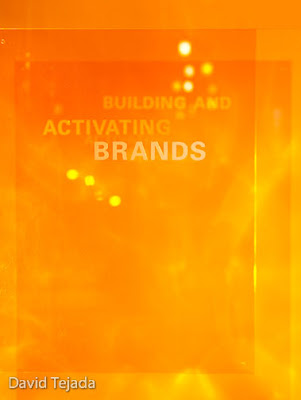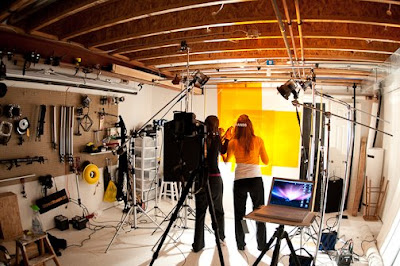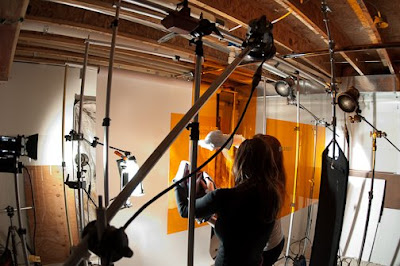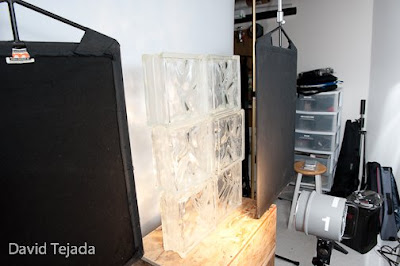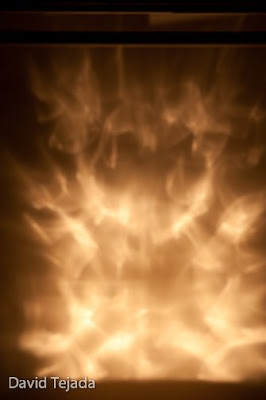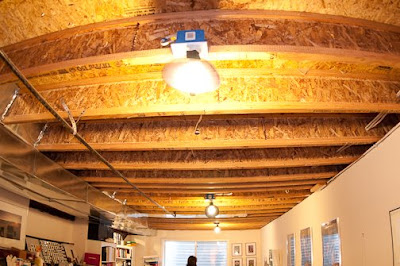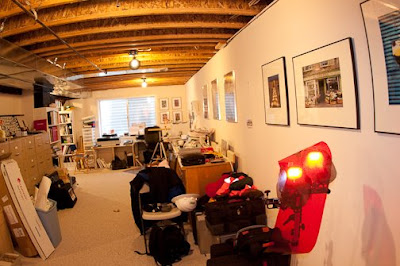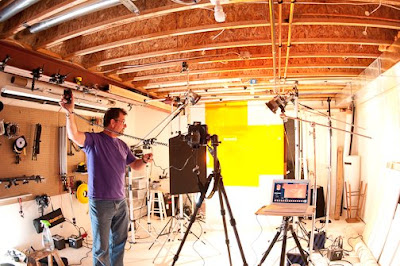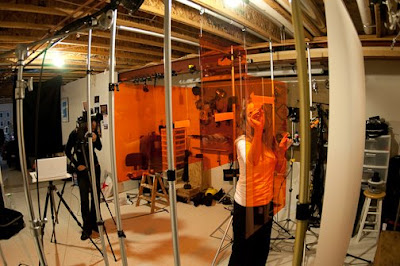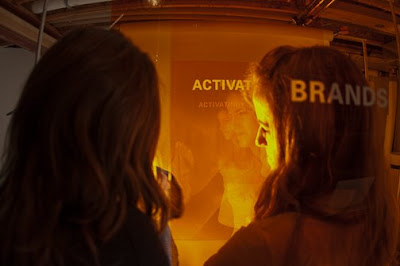 What a fun time we had at the recent Small Strobes, Big Results Workshop in Buffalo, NY. I would like to extend a special thanks to our hosts, Alyssa & Rich of Nickel City Studios as well to Derek Punaro for allowing us to photograph at the historic Central Terminal Train Station.
What a fun time we had at the recent Small Strobes, Big Results Workshop in Buffalo, NY. I would like to extend a special thanks to our hosts, Alyssa & Rich of Nickel City Studios as well to Derek Punaro for allowing us to photograph at the historic Central Terminal Train Station.We had two fantastic models to photograph throughout the day, thanks to Ann & Andrew for all your help and effort. The above photo of Anne was lit using the new FourSquare™ softbox with one SB-800 inside, as well as 2 SB-800 with full cuts of CTO's as kickers.
Here is photo of the set up for the above photo.
 This photo (below) was shot demonstrating a bounce technique, creating a soft directional light.
This photo (below) was shot demonstrating a bounce technique, creating a soft directional light. The photo below, was one of the first photos we did when we arrived on location at the train station. I used a 5 foot Octa with one SB-800 and another SB-800 with a full cut CTO as a kicker from camera right. There was also another SB-800 used to put some light up at the American Flag.
The photo below, was one of the first photos we did when we arrived on location at the train station. I used a 5 foot Octa with one SB-800 and another SB-800 with a full cut CTO as a kicker from camera right. There was also another SB-800 used to put some light up at the American Flag.
In the photo below, I used 4 SB-800's to light the photo. One used with a grid for the key light on Ann's face and the other 3 where snooted to contain the light and directed to her hands and feet.
 I sure had a lot of fun on this workshop, thanks to all that attended and I wish all of you great success with your future lighting.
I sure had a lot of fun on this workshop, thanks to all that attended and I wish all of you great success with your future lighting.If you would like to host a Small Strobes, Big Results Lighting workshop in your city, please let me know. I am looking for fun and interesting locations to conduct my workshops. If you think you have an interesting location and want to learn more about hosting a workshop, just email me and we'll see if we can make it work.


